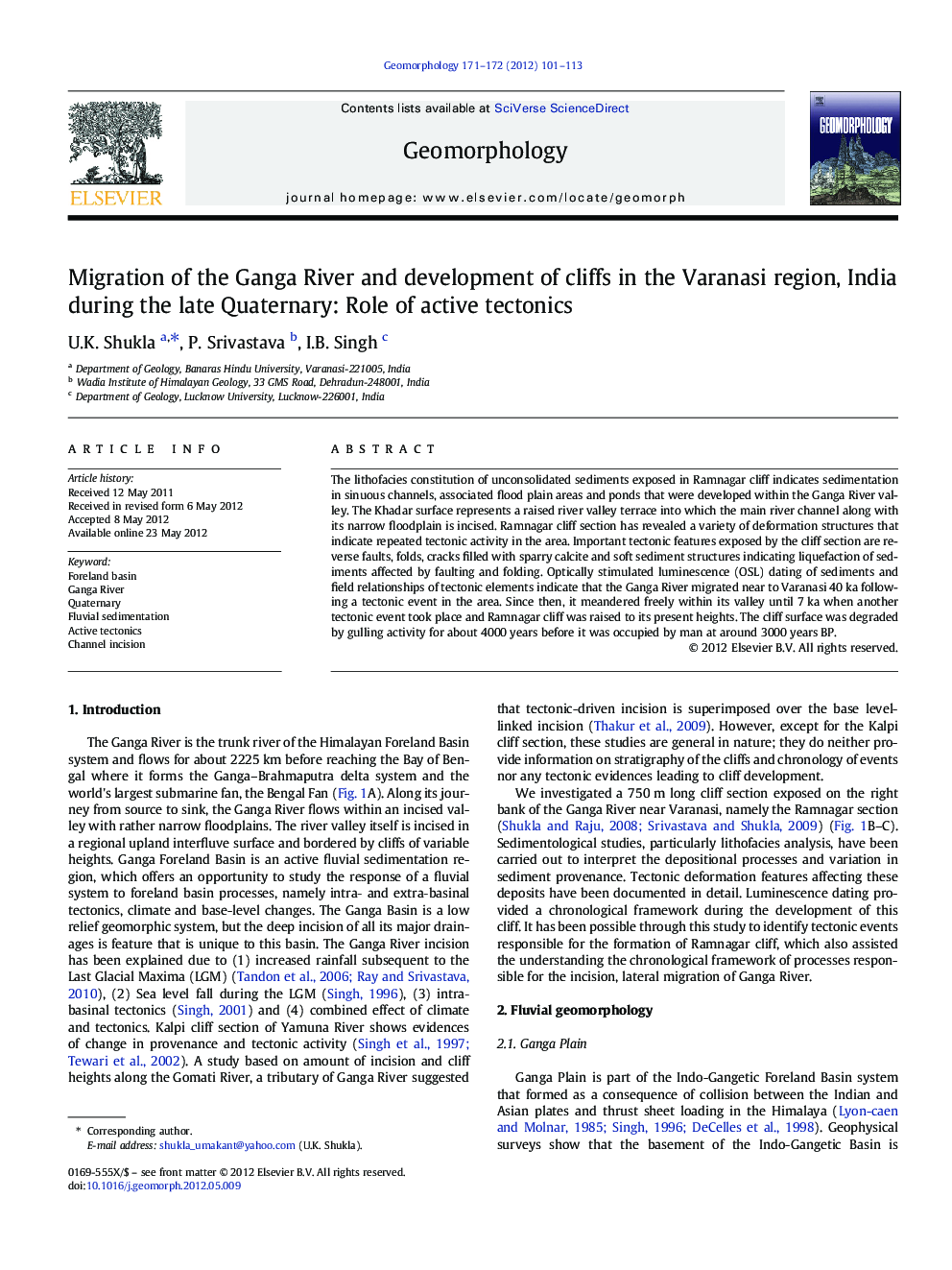| Article ID | Journal | Published Year | Pages | File Type |
|---|---|---|---|---|
| 6432860 | Geomorphology | 2012 | 13 Pages |
The lithofacies constitution of unconsolidated sediments exposed in Ramnagar cliff indicates sedimentation in sinuous channels, associated flood plain areas and ponds that were developed within the Ganga River valley. The Khadar surface represents a raised river valley terrace into which the main river channel along with its narrow floodplain is incised. Ramnagar cliff section has revealed a variety of deformation structures that indicate repeated tectonic activity in the area. Important tectonic features exposed by the cliff section are reverse faults, folds, cracks filled with sparry calcite and soft sediment structures indicating liquefaction of sediments affected by faulting and folding. Optically stimulated luminescence (OSL) dating of sediments and field relationships of tectonic elements indicate that the Ganga River migrated near to Varanasi 40 ka following a tectonic event in the area. Since then, it meandered freely within its valley until 7 ka when another tectonic event took place and Ramnagar cliff was raised to its present heights. The cliff surface was degraded by gulling activity for about 4000 years before it was occupied by man at around 3000 years BP.
⺠Quaternary Ganga Plain of Himalayan Foreland Basin is drained by many incised rivers. ⺠Most workers believe that climatic turnovers are responsible for river incision. ⺠Present study shows that tectonics is instrumental for river incision. ⺠Tectonics of Himalayan and basement faults controlled the level of incision.
